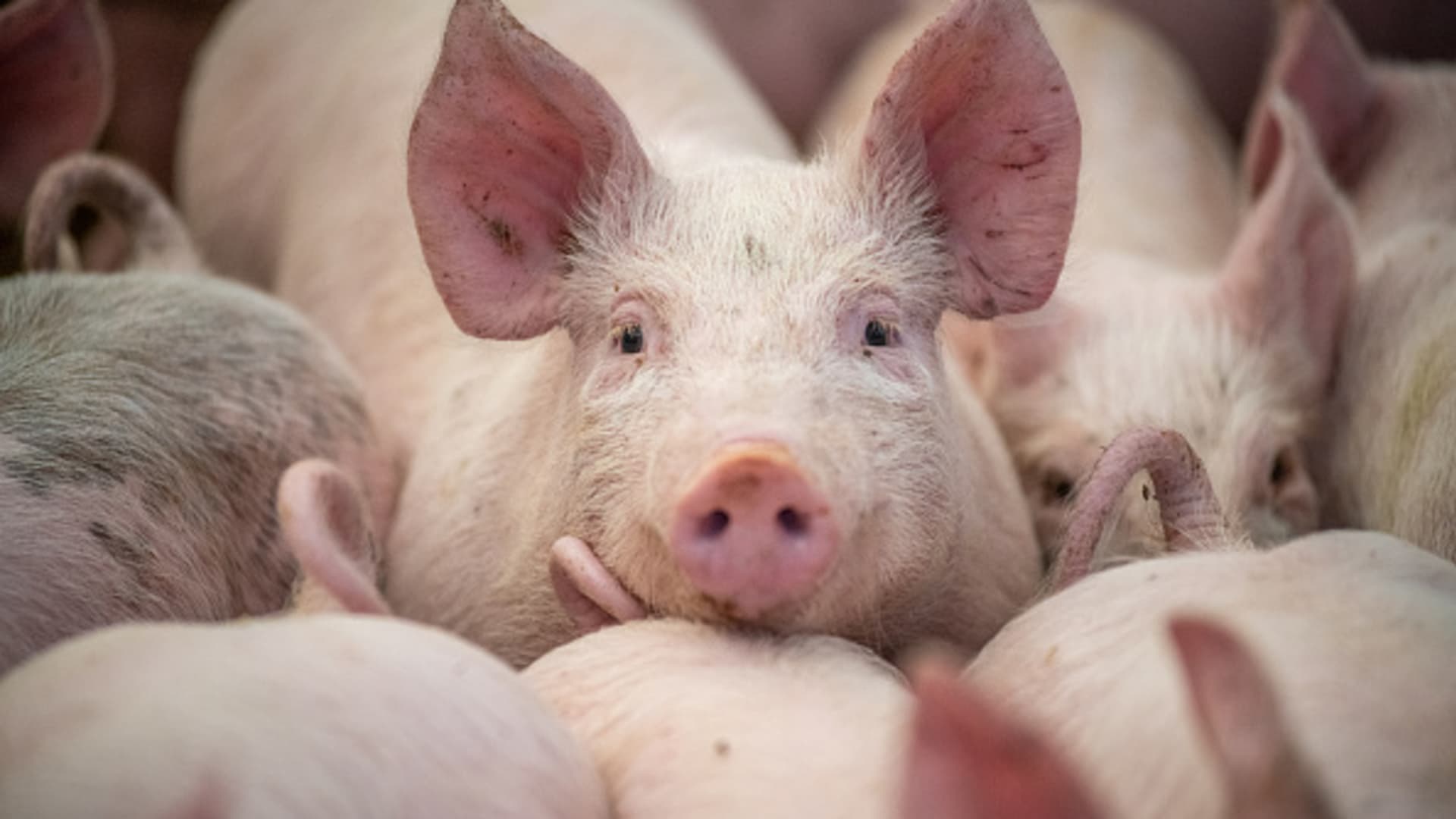China is ‘on the verge of deflation’ — and plunging pork prices aren’t helping

Pigs moving about their pen.
Vw Pics | Universal Images Group | Getty Images
Plunging pork prices in China are pushing the world’s second largest economy closer to deflation, in what could be another blow to its faltering economy.
A pork glut drove retail pork prices in China down 31.8% in November compared to a year ago, the latest official consumer price index showed.
And the tumbling prices of pork, which has an outsized weighting in China’s CPI, could add to the deflationary risks the country already faces, analysts who spoke to CNBC said.
Deflation — associated with the decline in prices of goods and services and a sign of a weakening economy — is concerning because consumers may postpone investments or purchases in hopes of prices falling further.
“Aside from falling real estate prices and price cutting across consumer goods, the biggest reason for China being on the verge of deflation is falling pork prices,” China Market Research Group’s Managing Director Shaun Rein said.
China’s consumer price index fell 0.5% year-on-year in November, marking the sharpest slide in three years.
Food makes up an estimated one-fifth of China’s CPI basket. Pork constitutes a large component within the food category of the basket, and has the greatest impact on China’s CPI which explains the close correlation between pork prices and CPI in China.
Too much pork
China’s pork sector has seen a prolonged period of oversupply and weak domestic consumption, said Jun Rong Yeap, a market strategist at IG in Singapore.
Pork production in 2022 hit the highest in eight years at 55.41 million tonnes, official data showed. More recently, the country’s pork output for the third quarter rose 3.6%.
“For the world meat market, a Chinese pork surplus means a deflationary impulse,” said Newedge Wealth’s senior portfolio manager Ben Emons, who added that the oversupply can be traced to before the pandemic.
Between 2018 to 2021, the African swine fever — which reverberated through the global pork supply chain — led to pork prices rising over 100%, Emons said in a note. That incentivized domestic pork production, with Chinese pig breeders responding by borrowing heavily to modernize hog farms.
Chinese consumers are changing diners’ preferences out of health consciousness, especially young people who switch to poultry and other foods.
Ben Emons
Newedge Wealth’s Senior Portfolio Manager
China’s hog cycle, which dictates pork prices, is currently facing an oversupply, said Erica Tay, Maybank’s director of macro research.
On top of that, unseasonably warm weather in November has delayed the traditional surge in cured meat demand in the winter months and upcoming festive new year, Tay said. Suppliers can only start curing meat at temperatures below 10°C, she added.
Beijing has tried to stem the slide in prices by conducting two rounds of pork buying for its strategic reserves, with the National Development and Reform Commission aiming to hold a third round within the year.
Additionally, while China is a heavyweight producer and consumer of pork, Chinese demand for meat is dwindling even though pork is getting cheaper, as consumers opt for healthier alternatives.
Roast pork and other kinds of siu mei are displayed in the kitchen of a Chinese restaurant.
South China Morning Post | South China Morning Post | Getty Images
“Chinese consumers are changing diners’ preferences out of health consciousness, especially young people who switch to poultry and other foods,” Emons noted.
Affluent Chinese are increasingly considering beef to be a healthier alternative to pork, with 28% of consumers surveyed saying they plan on reducing pork consumption, a study published in February by managing consulting firm McKinsey showed.
As for the less affluent, China Market Research Group’s Rein observed that they are saving money by ordering less pork.
China’s deflationary risks
The trajectory of China’s post-Covid economic recovery has been a choppy one, dragged down by its embattled property sector and slew of underwhelming economic data.
While pork prices are a core factor tipping China into deflation, an amalgamation of other factors have also contributed to subdued price pressures.
For one, aggressive discounting by e-commerce retailers during the Single’s Day period depressed consumer goods prices in November, said Tay from Maybank.
The receding fervor for domestic “revenge travel” has also seen airfares drop, reversing past months’ climbs, she added.
— CNBC’s Isabella Lok contributed to this report.









